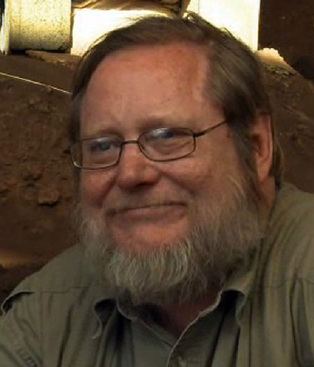Name Harold Dibble Role Archaeologist | ||
 | ||
Books Handbook of Paleolithic Typology: Lower and Middle Paleolithic of Europe | ||
Harold Lewis Dibble is an American Paleolithic archaeologist best known for his theory of lithic reduction and his methodological advancements in archaeological fieldwork in France, Egypt, and Morocco. He is currently Professor of Anthropology at the University of Pennsylvania and Curator-in-Charge of the European Section of the University of Pennsylvania Museum of Archaeology and Anthropology.
Contents
- Education
- Archaeological work
- Scraper reduction
- Fieldwork
- Computer applications in archaeology
- Books
- References
Education
Dibble received his B.A. in 1971 and Ph.D. in 1981, both from the University of Arizona. He wrote his dissertation under the direction of Arthur J. Jelinek, an American archaeologist who had been trained in North American prehistoric archaeology by Leslie A. White and who worked on both the Paleolithic of Western Eurasia and the Mimbres culture in New Mexico. While a graduate student in the late 1970s, Dibble excavated with the French prehistorian François Bordes at the site of Pech de l'Azé IV in Carsac-Aillac, France, with whom he developed a strong mentoring relationship.
Archaeological work
The majority of Dibble's archaeological work has been centered around Neandertals and early modern humans in Western Eurasia, and more particularly on the stone tools which are thought to have been the primary mode of their material culture. He wrote his dissertation on the stone tool technology of Tabun Cave in Israel and then focused primarily on France, with other research on the Zagros stone tool industries until beginning work in Egypt and Morocco in 2001 and 2006 respectively. In addition to his excavation work, he has maintained a skeptical view of symbolism in the Middle Paleolithic, on which he has published several articles, and he has strongly advocated quantitative methods in archaeology. To that end, he pioneered the use of GIS and total stations in excavations and has worked to quantify the understanding of stone tool manufacture via reproductive experiments.
Scraper reduction
Dibble's most well-known contribution to archaeological thought is commonly known as scraper reduction, built off of ideas first developed by Jelinek and George Carr Frison. Dibble’s hypothesis is that as Middle Paleolithic scrapers are subject to retouching, their forms change in a predictable manner, and the many scraper types of the Bordian typology represent different stages in the continuum of reduction from fresh blank to exhausted transverse scraper. Moreover, the intensity of reduction, as measured by quantity of more reduced versus less reduced scrapers, strongly correlates to availability of raw material.
An analogy used by Dibble is that of a pencil. Its initial form is long, with a full eraser and blunt writing end, which is then sharpened and used repeatedly until discarded in a much shorter form with a worn eraser. This is the form in which the pencil would be found by someone digging through the trash, though it bears little resemblance to the initially produced form of the pencil. If pencils are more plentiful, then they may be more readily discarded earlier in their use life; if they are more scarce, then they will be resharpened far more and discarded in a far smaller state. This parallels the forms in which archaeologists find the used and discarded forms of Middle Paleolithic scrapers.
At the time of its proposition, this was a relatively radical idea, as prior to then it was generally assumed that the typological categories were both discrete and desired forms. This idea was the basis to an earlier feud, the Bordes-Binford Debate, between Bordes and Lewis R. Binford. While Bordes posited that various facies of the Mousterian, defined typologically, were the result of different cultures, Binford maintained that each of the facies was functionally defined. Dibble's theory, by implying that stone tools as discovered by archaeologists are the result of a constant process of use and reuse and that what is excavated is often at the end of a long and complicated use-life, forced a reexamination of the entire debate.
Fieldwork
Dibble was director or co-director of three projects: excavations at the cave of Roc de Marsal[1], Campagne, Dordogne, France from 2004 to 2010; excavations at the Grotte des Contrabandiers (Smugglers' Cave)[2] in Témara, Morocco in 2006; and the Abydos Survey for Paleolithic Sites [3] in the high desert surrounding Abydos, Egypt from 2000 to 2007. In 2011 he began directing excavations at La Ferassie, also in the Dordogne region, where 6 Neandertal skeletons were found in 1913 and one in 1972.
Additionally, he has directed or co-directed projects in France continuously since 1987, beginning at Combe-Capelle Bas [4] in the Couze Valley, Dordogne, France from 1987 to 1990. This was followed by work with his former Ph.D. student Shannon J.P. McPherron at Cagny-l'Epinette [5], Somme, France from 1991 to 1994 and Fontéchevade [6], Charente-Maritimes, France from 1994-1998. Just prior to excavating Roc de Marsal, Dibble and McPherron reexcavated Pech de l'Azé IV [7], where Dibble had worked with Bordes in the 1970s, from 1999 to 2002.
A major push of Dibble's research program has been to reexcavate known and previously excavated sites using modern methodology. This has been done in conjunction with reanalysis of the old lithic collections, and, when combined, these allow comparison between the old and new collections. The comparison illuminates what was kept and what was discarded by the previous excavators, giving new life and interpretive value to the older collections.
Computer applications in archaeology
Dibble and McPherron have developed several freeware computer applications for Windows to facilitate archaeological fieldwork, including NewPlot (an archaeologically specific GIS program), EDM-CE and EDM Windows (data collector programs for use with Total Stations for Windows Mobile and Windows 95/98 respectively), and E4 (data collection program for artifact analysis). Their system has been adopted by a number of other excavators throughout North America, Europe, and Africa, and they have published extensively on these methods.
